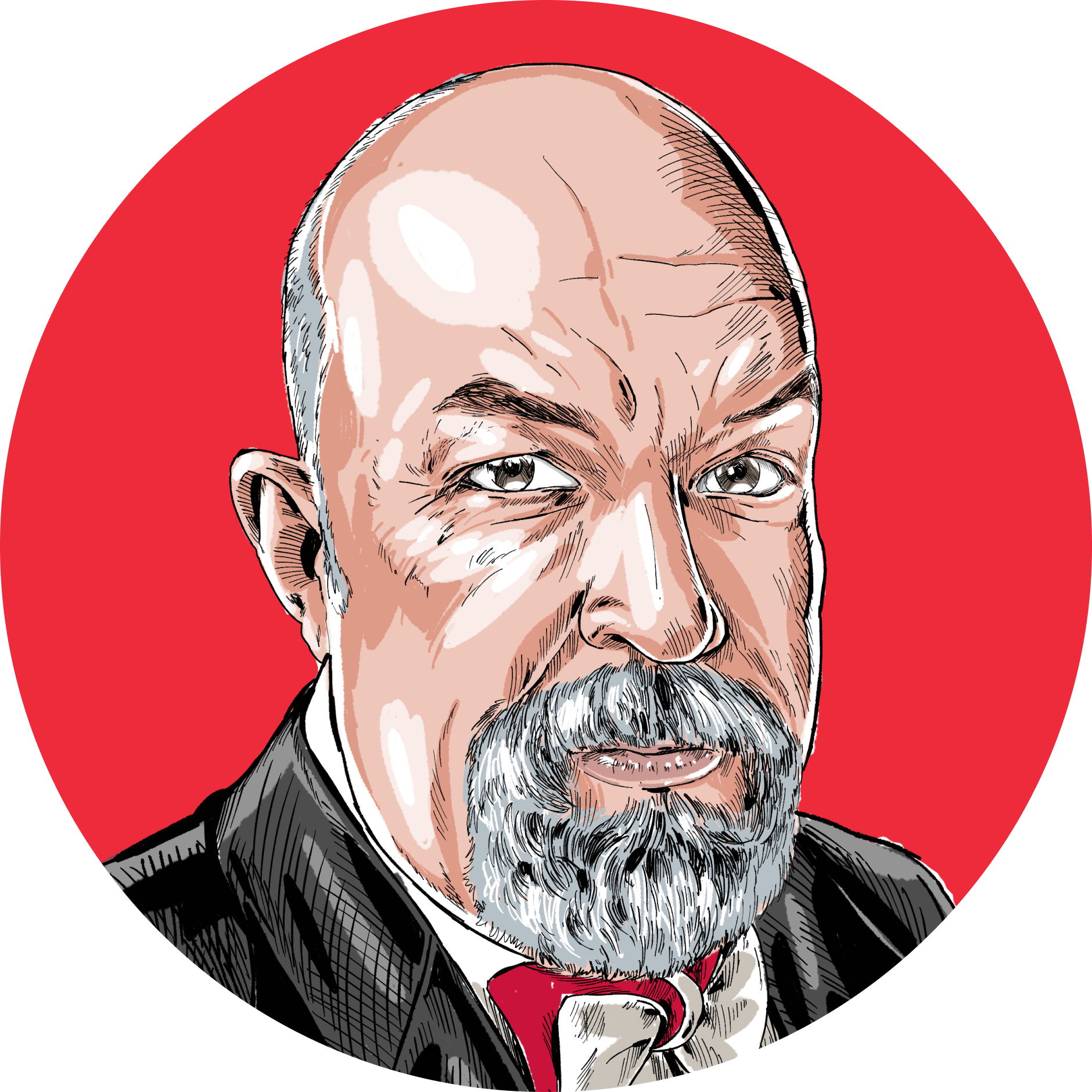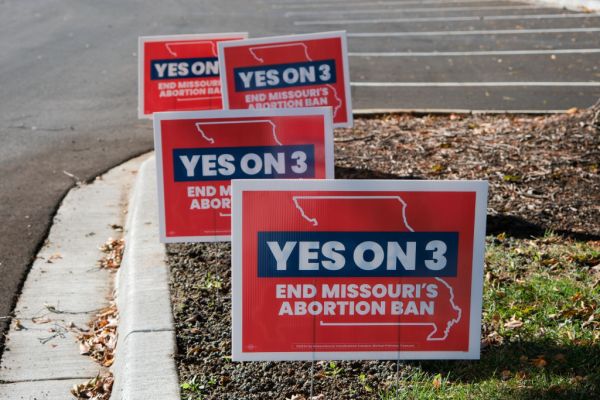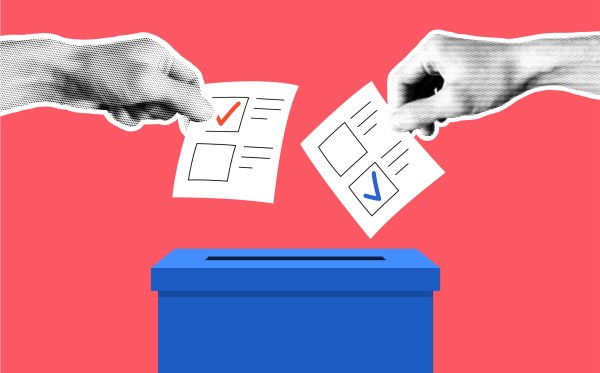Dumb ideas can be important, and falsehoods can be more powerful than facts, especially when it comes to shaping popular culture and broad social attitudes. That sounds simultaneously vague and grandiose, I know: What I mean to emphasize here is that the connection Americans make between which party’s politicians hold the balance of political power (especially the presidency) and the state of the economy at any given moment wildly exaggerates the connection between those things, and often descends into something indistinguishable from superstition, even idolatry. If the rains don’t fall and the cattle aren’t fecund, it is because the divine priest-king has failed to properly propitiate the gods of abundance; if nominal GDP growth is outpaced by inflation as measured by the CPI …
You know how that goes.
I do not like to make election predictions and am not very good at it. (Even worse, my method of prediction isn’t very entertaining! My general read is that the people who are significantly ahead in the polls on Election Day will usually win but sometimes lose, and that the races that are close will be close. There’s rank punditry, and then there’s stale punditry.) But this time around, the big trend is staring us straight in the face, and there isn’t any great mystery about the political vectors of 2022: Real wages have been declining—in fact, Americans have taken their biggest inflation-adjusted pay cut in about a quarter-century—and Democrats from Joe Biden on down are going to be blamed for that.
Americans’ real incomes were down 3.4 percent year-over-year as of September. And that is when incumbents get punished. How much are Democrats to be blamed for the current state of the economy? It’s a fair question, but a complicated one.
We’ve had two quarters of declining real GDP (i.e., a small recession as long as the president is a Republican and a complex technical question when the president is a Democrat) and, now, one quarter of GDP growth amounting to just a little over 0.6 percent, meaning a 2.6 percent annualized growth rate. A real GDP growth rate of 2.6 percent does not sound like much—it isn’t very much—but, if real GDP growth during the Biden years came out to an average of 2.6 percent, that would be a bigger number than we saw under Donald Trump, Barack Obama, George W. Bush, or George H. W. Bush, though less than we saw during the presidencies of Bill Clinton, Ronald Reagan, or Jimmy Carter. (You can make your own observations here.) A real GDP growth rate of 2.6 percent means that the size of the U.S. economy would double every 28 years or so—not too shabby.
The immediate problem for the U.S. economy is inflation. The longer-term problem—which could become an immediate problem very quickly if things go badly—is government debt. These are, at root, the same problem: the problem of excessive government spending. There was a lot of spending that was necessary, a bit more that probably was prudent, and even a little bit more that was reasonable in the face of the COVID-19 epidemic and the associated economic disruption. We can and will argue for many years about what was necessary and what was prudent and what was reasonable in terms of COVID-era spending, but it is difficult to dispute, at this moment, that there was too much of it. A great deal of the COVID-related spending that is driving today’s inflation was the result of spending that was supported by many Republicans during Trump’s presidency, but Democrats have extended extraordinary levels of spending and debt in a way that far exceeds what has been necessary, prudent, or reasonable, and Republicans have been right to try to rein that in some. There was about $4 trillion in new federal debt added in 2019 and 2020, while there was another $1.4 trillion in 2021 and will be another $1 trillion or so in 2022. Donald Trump did veto one spending bill—the National Defense Authorization Act for fiscal year 2021—but not because it contained too much spending. In fact, in his veto message, Trump boasted that no one had ever “approved more money for the military, than I have.” He only complained that Congress was doing too much to control how he spent the money (he wanted to redirect funds toward a border wall) and that Congress didn’t use the defense bill to gut U.S. technology firms by repealing Section 230. No complaints about big spending.
(Congress overrode his veto.)
It is fair to say that Democrats have been bad on spending, and that they have been worse than Republicans have been. The real question—which, unfortunately, is unanswerable—is whether Democrats have been worse on spending than Republicans would have been if they had won the 2020 presidential election and had taken a majority in both houses of Congress at the same time. No one can say for sure, even if the alternative history is fun to contemplate. B unified Republican governments have not had great fiscal records in recent years, and while Republican fiscal incontinence has traditionally come in the form of irresponsible tax cuts, Republicans have been making peace with big-spending politics for years. Conservatives used to talk about undoing the New Deal, whereas in our time some rightists simply want to graft kulturkampf politics onto the agenda of the Lyndon Johnson administration. The old Republican model was, at least notionally, to be libertarians at home and hawks abroad, whereas the current direction of the Republican Party seems to be joining Franklin Roosevelt’s domestic agenda with Ron Paul’s foreign policy.
That’s going to go badly. But, at the moment, it isn’t going anywhere, because Republicans are out of power in Washington. And that means that Democrats are going to take the hit for the inflation and other headwinds that have produced the decline in real wages. We can argue whether the proper blame ratio is 60-40 or 70-30 or 51-49, but that is not the kind of ticket-splitting voters are apt to do.
And Furthermore …
Here’s some rank punditry: Given the above, Nevada has to look bad for the Democrats. Nevada is a relatively low-income state (Nevadans earn about 85 cents on the national-average dollar), one of the few states in which the big bad political gorilla is a private-sector labor union (rather than the public-sector unions of California or New Jersey), a state with high unemployment (fifth-highest in the nation), and the state in which the largest share of the workforce is subject to occupational licensing. Nevadans in the state’s powerful Culinary Union feel economic swings particularly acutely (because weekends in Vegas are the first thing people cut from their household budgets), while service workers outside of the union-job bubble find it difficult to access higher-paying jobs that require licensure. Nevada’s union leaders aren’t ready to go Republican, but it isn’t abortion that their rank-and-file members are talking to them about at meetings, and “more of the same” is unlikely to be at the top of anybody’s wish list in Nevada right now.
Economics for English Majors: Marginal Cost
You might not think of being a newspaper editor as a factory job, but I got a pretty good education in the issue of marginal cost in a factory setting during my newspaper years. Printing a newspaper is like building a car: The first one is by far the most expensive, and the last one is the least expensive. It costs about as much money to print 100 newspapers as it does to print 10,000—even if you want only one copy, you have to do all the work you’d do if you were going to print 50,000: preparing the presses, making the printing plates, all that stuff. Likewise, you pretty much have to build the truck factory even if you only want a couple of dozen F-150s. The first truck off the line might cost something on the order of $1 billion, but the 1,000,001st doesn’t add very much to the cost of producing the first 1 million.
Marginal cost—the cost of making one additional unit of x—is something that we encounter in both business life and in household economic life. Assuming you make a healthy income, the tax you pay on your last dollar of income is a lot more than the tax you pay on the first dollar. The economics of marginal cost make mass production very attractive—so attractive that it has in some settings become a kind of ideology even where mass-manufacturing isn’t practical or economical.
For example, architects and urbanists have been trying to advance the cause of mass-produced modular or manufactured housing ever since le Corbusier quipped, “A house is a machine for living in.” There was a kind of social-justice ideology associated with Pop Art, based on the idea that great art shouldn’t be prohibitively expensive: Only the plutocrats can own a Rembrandt, but, in theory, everybody could own a mass-market product coming out of Andy Warhol’s “factory,” or a Roy Lichtenstein or a Robert Indiana piece reproduced by the thousands. (And, in fact, you can buy a Lichtenstein print for a very low price—while the artist’s original works still command nearly $100 million at auction.) Manufactured housing has not made it very far out of the trailer park, and high-end Dwell-style modular homes often cost more than traditionally constructed ones do, owing mostly to the fact that houses aren’t cars—cars are meant to be mobile, and houses aren’t, and it isn’t a lot easier or cheaper to build a house in a factory and then move it to the site than it is to build a house on the site where it will sit.
As a friend in the building business put it, “Every building is a prototype.” (That’s an exaggeration, but not much of one.) Even so-called production homes, those cookie-cutter domiciles that get built by the hundreds, generally include important variations from house to house, whereas a Toyota Camry built to a certain spec is pretty much identical to every other Camry built to that spec. That’s been one of the problems with nuclear-power plants: Every plant is, in effect, a unique project, and in the United States we don’t build enough of them for the engineers and builders to benefit from big stockpiles of experience or economics of scale—hence the hope invested in new “modular” reactors, which may succeed in bringing some of the benefits to nuclear-plant construction that modular housing hasn’t really brought to the housing market.
This has been on my mind a little bit because of that $1.7 million public toilet everybody has been mocking in California. Spending $1.7 million on a boutique toilet designed by fancy architects and subject to years of environmental and political evaluation is pretty much the most San Francisco thing you’ll ever experience outside of hepatitis, but the economics at work should be familiar to anybody who’s ever read about the Defense Department paying $500,000 for a wrench or $2 million for a toilet seat. If you have very specific requirements and you don’t build a million or 10 million of whatever it is, it’s like printing five newspapers at a cost of $500 a copy or building one pickup truck for $1 billion because you had to build the factory to build the truck.
There are some places in modern economic life where declining marginal costs can really work in our favor: It cost a boatload of money to produce the first titanium artificial hip, but the 1,000,000th one cost a lot less on a marginal basis. Once you have built up the production apparatus, it is relatively inexpensive to print one more book or perform one more cardiac-stent surgery. But there are lots of goods and services we care about—including many educational and medical goods—where marginal pricing doesn’t do us nearly as much good. Harvard isn’t a machine for teaching in, and it’s never going to be priced like one.
(You can watch lectures in elite universities all day long for little or no money, but that doesn’t bring the same personal or professional benefits as four years at Princeton—because there is a lot more to an Ivy League education than the lectures. As someone once observed, you can get a good education at any public library—Harvard is for other things.)
There’s a flip side to the marginal stuff: The more money you have, the less another dollar is worth to you. Imagine you have a great but demanding job that pays you $1 million a year. That’s a heck of an income and probably demands more from you than 40 hours a week—would you work twice as many hours for $2 million? You’ll work your ass off for that first part of your income—the part that lets you have a house and a car and food for your family. But if you’re making a lot of money, you might not be willing to lift a finger for an extra $10,000 a year or $20,000 a year. There are those of us who are lucky enough to have jobs that are fun and interesting, and some of us could probably make a lot more money doing something less fun and less interesting. “More” is an important word, but it is not as important as the words “Compared to what?”
That’s part of the theory of progressive income tax: Under a flat tax, high-income people would pay more taxes than lower-income people in a way that is precisely proportional to their incomes. The argument for a progressive tax says that another $1 billion doesn’t matter to Elon Musk nearly as much as the first $1 billion, so why not tax it at a higher rate? I’m a flat-tax guy, myself, but there’s something to the marginal-dollar argument.
Incidentally, the greatest moment in the history of Twitter was Drake’s boasting, “The first million is the hardest,” to which the late Texas oilman T. Boone Pickens responded, “The first billion is a hell of a lot harder.” Drake, being a good Canadian, conceded that the old man had “just stunted on me heavy.”
(I’ll tell you about the time T. Boone Pickens and I almost came to blows in the offices of National Review one of these days.)
So, back to that California toilet: It’s going to be expensive to build one good public toilet. It doesn’t cost nearly as much per toilet if you build thousands of them—ask Starbucks.
One More Thing . . .
When taxes or regulations or other new costs are imposed on businesses, some people sniff that they will just “pass the cost along to consumers.” But businesses can’t always do that, as they understand over at the Wall Street Journal.
I Don’t Hate To Say, ‘I Told You So’
A while back, I wrote a piece arguing that the right had entered its “hippie phase,” that the radical anti-government stuff and FBI conspiracy theories and sundry political kookery going hand-in-hand with various strains of anti-vaccine and alternative-medicine kookery followed a familiar template—one that did not magically appear in the 1960s but was expressed in a particularly colorful way at that time. As the January 6 convictions pile up, it is remarkable to see how overrepresented yoga teachers and yoga enthusiasts are among the would-be putsch-partakers. (I am hardly the first one to notice this.) Olga Khazan, writing (about my people who also are her people) in the Atlantic, ably shows that this isn’t exclusively—or even primarily—about politics per se: What we are dealing with is a kind of free-floating delusional mania that opportunistically attaches itself to any social phenomenon that provides a point of differentiation—elections, Afghanistan, COVID, whatever—that gives a person an opportunity to demonstrate his specialness, his access to status-conferring secret knowledge. That is one of the great ironies of our time: 21st century social changes and technology, particularly social media, have given people the chance to express their individuality and connect with others on a scale unprecedented in history—which has served mainly to reveal and emphasize the essentially sameness and homogeneity of the great majority of people.
We call them “masses” for a reason.
Words About Words
I’m going to keep it short this week, because, overall, Wanderland is running a little long. Here is a headline from a Linda Greenhouse column in the New York Times: “On Affirmative Action, What Once Seemed Unthinkable Might Become Real.” Two thoughts: “Affirmative action” is, and always has been, a euphemism for racial discrimination. Before we called it “affirmative action,” activists and wonks wrote about “positive discrimination” or “compensatory discrimination,” or things of that nature. Not every opponent of that kind of racial social engineering has been pure of heart—far from it!—but those who complain that these programs are, in fact, racial discrimination are correct.
About that “unthinkable” …
Is it really unthinkable that there should be no racial preferences in college admissions? There weren’t any before the late 1960s, and they have been challenged from the very beginning—the first anti-preferences lawsuit was filed about two years after the first programs were put into place. It is eminently thinkable that there should be no racial preferences in education. Even if you prefer preferences, it is far from unthinkable that these programs, which have always been contested, might be curtailed or eliminated. Unthinkable in this case is just a very silly way of writing “bad” or “something I don’t want.”
Greenhouse is a bad enough writer in her own right, but columnists don’t generally write their own headlines. She’s probably not to blame for the topper. She is to blame for the shallow and smug argument that follows it.
Elsewhere
You can buy my most recent book, Big White Ghetto, here.
You can buy my other books here.
You can see my New York Post columns here.
Please subscribe to The Dispatch if you haven’t. It is money well spent, if only to help prove to the rest of the media world that you can sell subscriptions if you write interesting stuff and that this is a better model in the long run than generating semi-pornographic crap for clicks.
In Closing
Last week marked the 100th anniversary of the fascists’ march on Rome. These things happen. They really do.









Please note that we at The Dispatch hold ourselves, our work, and our commenters to a higher standard than other places on the internet. We welcome comments that foster genuine debate or discussion—including comments critical of us or our work—but responses that include ad hominem attacks on fellow Dispatch members or are intended to stoke fear and anger may be moderated.
You are currently using a limited time guest pass and do not have access to commenting. Consider subscribing to join the conversation.
With your membership, you only have the ability to comment on The Morning Dispatch articles. Consider upgrading to join the conversation everywhere.